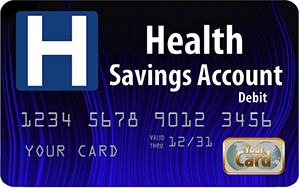8.2 Health Insurance Components
Various countries handle medical costs differently. In the United States, every person must enroll in some form of health insurance coverage. Health insurance helps patients cover incurred medical costs for such items as pharmaceuticals, physician visits, laboratory costs, and hospitalization. In Canada, health care is funded and administered by each province and territory. The Canadian government ensures that coverage is made available to every Canadian citizen. Insurance in Canada is used for out-of-system services and expenditures.
 Pharm Fact
Pharm Fact
In 1990, 1.47 billion prescriptions were dispensed at an average cost of $6.62. In 2014, over 4 billion prescriptions were dispensed at an average cost of $77.20!
Healthcare coverage in the United States may be provided by commercial insurance paid by the individuals, or through their employers (with shared premium costs), or by one of the state or federal programs:
Medicare (Parts A, B, C, and D) for those over 64 or disabled, administered through the US Department of Health and Human Services and contracted private insurers
Medicaid for low-income patients and their dependents, administered by individual states
Children’s Health Insurance Programs (CHIPs) and affordable care health exchanges, primarily administered by individual states
Tricare for active military (including National Guard and Reserves), veterans, and military dependents, administered through the Defense Health Agency
The components and payment structures of each health insurance plan are determined both by the type of insurance provider and the individual insurer.
Commonly, patients have only one primary health insurance plan, which pays up to its coverage limits. Some patients also have a secondary health insurance plan, which pays what the primary does not—if the service is covered under the secondary plan. The patient may still have out-of-pocket costs even with two insurance plans. Some patients who have excessive drug needs have to combine more than one healthcare insurance program with a specific prescription drug insurance policy.
There are several important concepts and terms the pharmacy technician must understand related to insurance coverage. These include responsible payment parties, coinsurance, copayments, catastrophic insurance, health savings accounts, flexible spending accounts, pharmacy benefit managers, and insurance billing codes.
Responsible Payment Parties
The first party responsible for covering a medical bill is typically the person who directly receives the benefits, services, or product. In some cases, a parent, guardian, or other responsible party is considered the first part. The second party is the healthcare provider. The third party is an organization other than the patient or healthcare provider involved in paying for medical expenses. Third party payers include insurance companies, government agencies, or individual employers.
To receive health insurance coverage, the patient pays a monthly premium, or enrollment fee. This fee may be paid directly to the insurer or more commonly is deducted from one’s paycheck to be paid by the employer to the insurance company along with an employer subsidy (offered as an employee benefit).

Pharmacy technicians need to understand insurance terms and types of policies so that they can answer patients’ questions intelligibly.
The monthly premium allows the patient access to the health services and products outlined in the specific insurance policy, or plan. These specific health services and products are called benefits. The policy describes the specific circumstances under which the policy will cover these expenses. The plan includes the processes, rates, rules, and restrictions. Many policies, especially with Medicare, cover preventive office visits, such as annual physicals and well-baby checks without additional costs above the premium.
Most health insurance plans include some combination of individual and/or family annual deductible levels. The deductible is the designated amount of annual medical costs that must be paid by the patient before the full coverage by the insurance company kicks in. So in that sense, this amount is deducted from coverage benefits. For instance, if a plan designates a $5,000 deductible for an individual, the patient must pay for a large portion or all of the medical costs up to $5,000 before the insurance company will consider paying the full or majority portion of each expense. In this high deductible plan, the patient may have numerous office visits and tests done and perhaps an emergency room visit before the insurance company will cover much or anything at all.
 Pharm Fact
Pharm Fact
Costs toward a prescription drug insurance deductible usually start accruing with the first day of the calendar year.
The higher the deductible, the lower the monthly premium because the patient is assuming much of the risk. Lower deductible plans often start at a $250 or $500 annual deductible with higher monthly premiums. The designated annual deductible levels and monthly premiums are reviewed annually and often change year by year to meet rising costs (like the collision insurance on your car).
 IN THE REAL WORLD
IN THE REAL WORLD
In a high-profile case in 2015, Turing Pharmaceuticals purchased the patent rights to the antiparasitic drug tablet pyrimethamine (Daraprim). It is the only treatment currently approved for toxoplasmosis, which is a parasitic condition commonly associated with deer ticks in the United States. Also used to fight malaria, the drug is on the World Health Organization’s List of Essential Medicines. Martin Shkreli, the former hedge fund manager who became Turing’s CEO, decided to turn a profit on the drug. In one day in September, he raised the price of Daraprim by 5,000%, from $13.50 to $750, causing outrage from citizens and government officials alike. Because of the outrage, Shkreli reduced the price somewhat, but his actions illustrated the reality of drug price gouging and profiteering. It also highlighted the fact that many patients struggle to pay for their prescriptions (even when they have insurance) because of high coinsurance payments and deductibles.
Patient Coinsurance Payments
For some policies, when patients receive a medical service or drug product, they must immediately pay a certain percentage of the cost, or coinsurance payment, with any potential further billing to come later. Coinsurance payments and percentages vary with the service provided and the insurance policy. Coinsurance payments remain an element of Medicare Part A but are less common today in other government and private insurance programs.
 Pharm Fact
Pharm Fact
As the number of manufacturers of the heart drug digoxin decreased from eight to three over the past decade, the cost of the drug increased by over 600%!
Patient Copayments
A different shared approach is the copayment (copay). It is a flat out-of-pocket fee that the patient is required to pay for each health visit, service, or product at the time of delivery. For instance, a copay could be $20 per office visit and $10 per generic prescription. The remaining costs would either be covered by the insurance company or by the patient until the annual deductible level is reached, when the insurance will pay a higher percentage. Copays vary by insurance company, as outlined in the policy of each company. Plans with higher premiums often have no copayments or a lower copayment and deductible.
 Practice Tip
Practice Tip
In a tiered copay, the patient might pay $5 for generic, $25 for brand, and $100 for nonpreferred.
Healthcare plans may have a tiered copayment system, such as $20 per non-emergency office visit and $200 per emergency room visit. Prescription drug insurance companies also often establish a dual copay with one flat fee for generic drugs versus another fee for brand name drugs. There can also be a three- or four-tiered copay program, having different copays for generics, preferred brands, nonpreferred brands, and specialty drugs.
Catastrophic Insurance
Catastrophic insurance is an insurance plan that is used only when a person has experienced a severe accident or unexpected debilitating illness or disease. It has very low monthly premium payments but a very high deductible (e.g. $5,000-$10,000) and few preventive services. It also generally has no copayments or coinsurance payments, putting the full weight upon the patient for every medical expense until the annual high deductible level is reached. Young, healthy people who rarely visit the doctor often rely on this kind of insurance. It’s considered a “safety net” for people who don’t expect to have many medical bills but want coverage in case a “catastrophe” strikes.
Health Savings Accounts
To assist people in putting money away for healthcare costs not covered in high-deductible insurance plans, there are Health Savings Accounts (HSAs). These are savings accounts that can be started by patients or their employers to set aside tax-deferred money specifically for healthcare costs not covered by insurance. The money is deposited before taxes and can be used only for legitimate health bills. HSAs are particularly helpful for individuals with high-deductible insurance plans or enormous annual health costs that go beyond the maximum levels paid by the insurance company in a year. The unused deposits in the HSA may accumulate from one year to the next.

Flexible Spending Accounts
In flexible spending accounts (FSAs), patients, through their employer, can also place pretax dollars aside for medical expenses and child and dependent care. However, these dollars must be carefully predicted and spent within the year (though under certain circumstances, $500 a year may be carried over).
Pharmacy Benefit Managers
Nearly all insurance companies and plans that handle prescriptions work with a pharmacy benefit manager (PBM), a division of the insurance company or a separate company that processes patient prescription claims (explained in more detail in a later section).
Insurance Billing Codes
Insurance companies all use established coding systems for billing claims so that the computers can speak to each other and the electronic health records (EHRs) can be consistently communicated across providers and insurance plans. These coding systems use combinations of numbers to designate the diagnoses and the associated prescription claims. Three kinds of billing code systems are used for different kinds of billing:
ICD-10 (International Classification of Diseases, 10th edition), to record diagnoses and disorders
HCPCS (Healthcare Common Procedure Coding System—Level II), to record supplies, equipment, and devices supplied for medical purposes
CPT (Current Procedural Terminology), to record procedures and services
The pharmacy software will translate and check the coding. As a pharmacy technician, you will make sure that the HCPCS coding from the physician is present to bill Medicare Part B for all diabetes test supplies, including blood glucose monitors, test strips, lancets, and syringes as well as respiratory solutions and nebulizer equipment and tubing. If the coding is not present, you will have to call the physician’s office for it. Also, if a pharmacy has a Medicare Part B contract (contracts will be explained later in this chapter) for supplying large durable medical equipment (DME)—such as hospital beds, wheelchairs, and walkers—the technician will need the HCPCS supply code plus an ICD-10 diagnostic code from the physician. These coding systems are also necessary in the claims processing for the DME and specified pharmacy services of Medicare Part D patients.
Technicians may be involved in using the CPT coding system to bill PBMs for the medication therapy management (MTM) and patient care services provided by the pharmacist. These billing procedures are processed separately from the on-the-spot online processing of drug prescriptions.